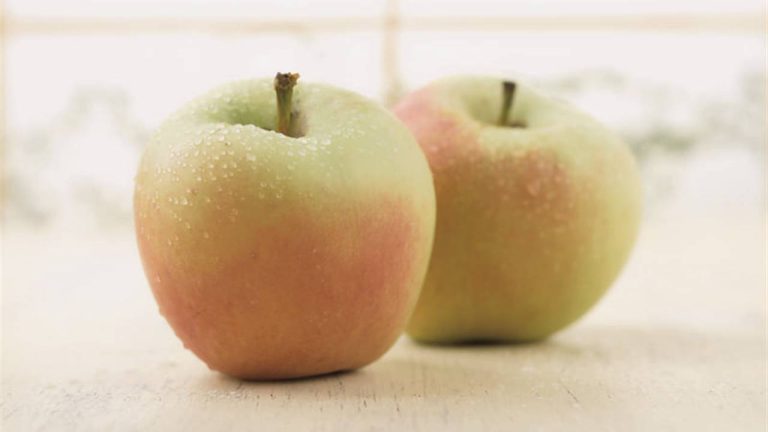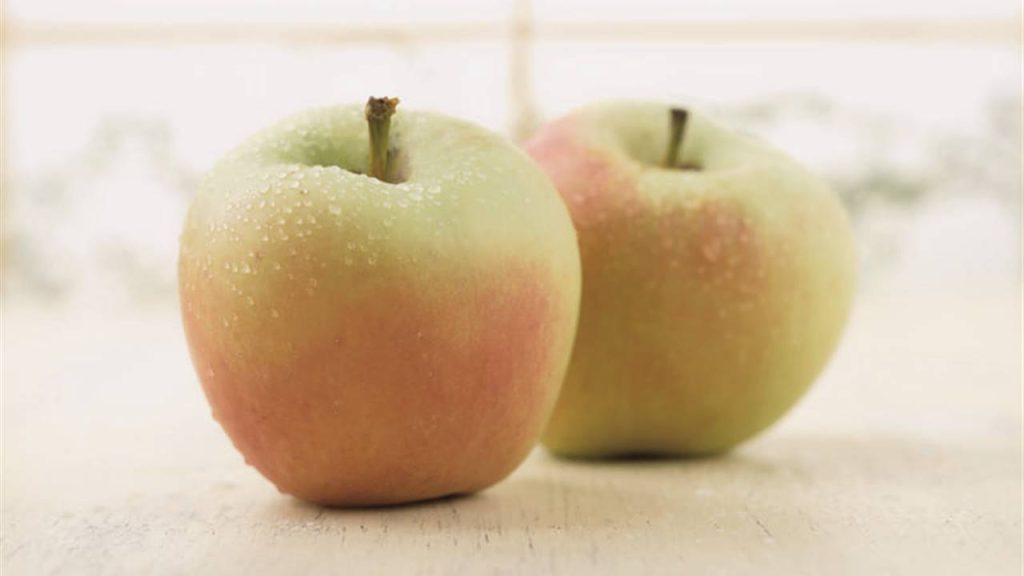
Health and pleasure come together in this millenary; juicy, light fruit rich in vitamin C. Its soluble fiber fights constipation and helps regulate cholesterol.

- Benefits of apples
Apples are especially rich in phytochemicals: they contain quercetin, catechin, kaempferol, hesperidin, myricetin and phlorizin, among other substances. All are antioxidants with anti-inflammatory effects. Not surprisingly, epidemiological studies show connections between apple consumption and a reduced risk of cancer, asthma, diabetes and cardiovascular disorders.
Discover the different types of apples that you can use in the kitchen to take advantage of all its benefits.
STARKING
Because of its colorful color and large size, it might look like the apple with which the witch of the story tempted Snow White, but in reality, it is a mutation of that variety, the Delicious Network.
Coming from the United States, it is on the market from September to June. Its thin skin is a bright red color barely interrupted by some yellowish speck.
Its pulp is soft and consistent, although sometimes it can be somewhat floury, and offers a sweet, mild and not acidic taste.
Excellent in confectionery and cooking, especially to prepare sauces and accompaniments.
GREEN MAIDEN
Of this traditionally Spanish variety there are many details that attract attention:
- Its flattened and irregular shape, almost always lowered to one side:
- its yellowish-white, waxy and charolate skin, which gives it a glazed appearance, as if it were icy, and with more or less rosy tones where the sun has given it;
- and its distinguished taste, sweet and delicate, with an acid point that is not easily forgotten.
Its pulp, consistent and juicy, is very aromatic.
August and September are the best months to taste this fruit. It is very well preserved.
GOLDEN
Developed in the late nineteenth century in the United States, it is seen in greengrocers almost all year round, although its natural season runs from October to March.
There are several types, with variations in color and flavor, but the most widespread is the Golden Delicious.
Its greenish-yellow skin is soft to the touch and has black dots called lenticels (its respiratory organs).
The meat, juicy and aromatic, is sweet. It is used to make jams and compote, and looks great in cakes, stews and fillings.
When cut it takes time to darken, so it is also a good option to include in salads.
PIPPIN
The thick and slightly rough skin gives this flattened variety a rustic air. In the background it has a more or less dark green color depending on whether it is White or Gray Reineta, although as it matures it turns yellow.
In France, the prestigious grey warbler of Canada is cultivated. Aragon and Castile are in Spain the areas where the variety is most widespread. In El Bierzo it even has a designation of origin and stands out for its quality, hardness and sweetness.
Juicy, sweet and refined, excellent for jams and compotes, cakes and even savory dishes.
GRANNY SMITH
The acidic taste of this variety of Australian origin, chosen by the Beatles as the emblem of their Apple Records label, is no less surprising than the bright green color of its thick skin.
By biting into the pulp, slightly greenish and very crunchy, the mouth is filled with its acidic juice.
It was discovered by a woman surnamed Smith who, with a lot of commercial vision, called her “Granny Smith”, that is, “Granny Smith”.
It can be eaten raw, but it is when cooking it that its acidity gives the best results. It is ideal for mousses, sauces and cakes.
FUJI
Originally from Japan, it inherits its name from the Fujisaki people, where it was first cultivated, although the main producer of this variety is today China.
Under its unmistakable skin, of beautiful pink iridescence on a background more green than yellow, hides a yellowish, crunchy and juicy pulp with a very sweet taste.
Delicious in cakes and cakes, it is also appreciated as a table fruit, and is ideal for making juice, because you do not have to add sugar. It gives a lot of play in salads and fruit salads.
In a cool place, it keeps well for weeks.
ROYAL GALA
With an unmistakable sweet taste, this New Zealand variety is, of all those selected, the rounder and smallest. Orange stretch marks furrow its skin on a yellow background.
It was named “Royal Gala” in honor of Queen Elizabeth II of England, who on a visit to New Zealand praised its virtues.
It is soft and one of the most common on the market. Crunchy, juicy and sweet, although with an acid point, it is excellent as a table fruit and in salads. Grated remains tender and sweet.